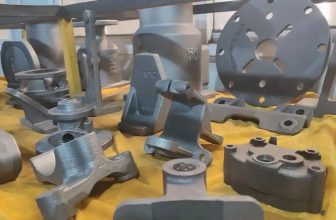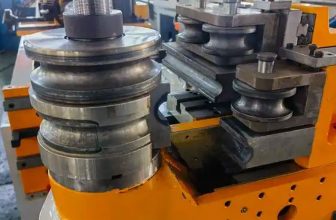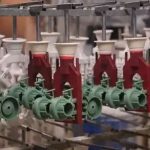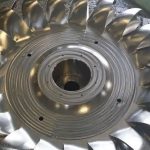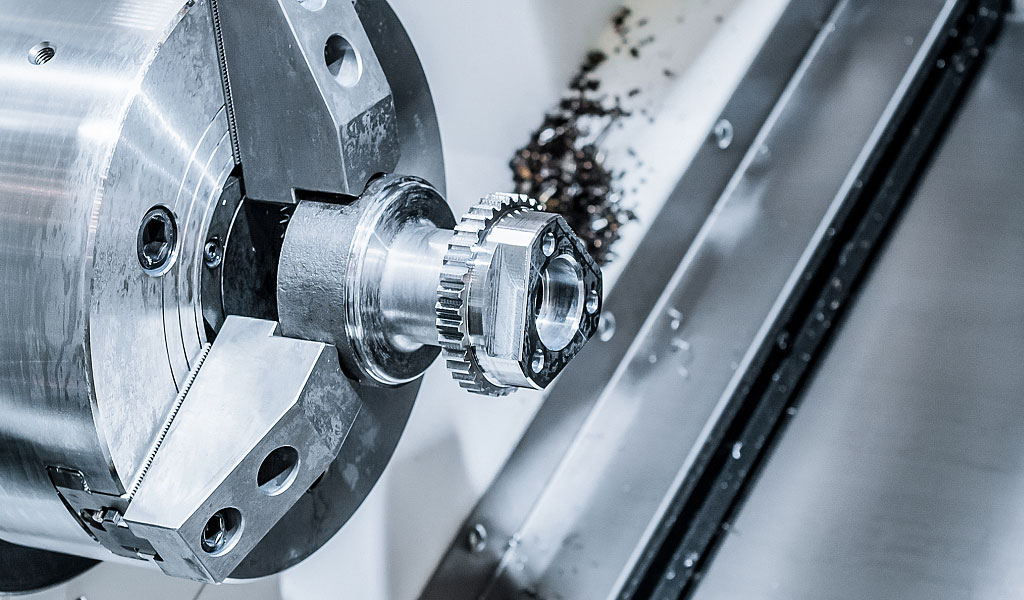
The CNC Machining performance of the cnc numerical control machining center is very powerful and has a wide range of applications, but there are some detailed knowledge in the use of the numerical control machining center that our CNC Machining personnel need to master. The editor summarizes a large amount of information and analyzes the use of numerical control machining in detail for everyone. The center needs to be familiar with the eight steps, let’s take a look, if you have overlooked these:
Preparation Before Starting The Machine Tool
Every time the machine tool is turned on or after the feed is stopped or reset, the reference of the machine tool should be reset to zero first, so that the machine tool has a reference position for future operations;
Workpiece Clamping
Before the workpiece is clamped, it is necessary to clean each surface. It cannot be stained with iron filings, dust and oil, and use a file or oil stone to remove the burrs on the surface of the workpiece. The high-speed iron used for clamping must be ground by a grinder to smooth each surface , make it smooth, credential. The code iron and the nut must be fixed to be able to reliably clamp the processed parts. When dealing with some difficult clamping parts, they can be directly clamped on the vise. The machine tool table needs to be kept clean, free of iron filings, oil and dust , the iron pads are generally placed at the four corners of the workpiece, and the high-speed iron must be placed in the middle of the parts with a large span;
According to the size of the drawing, use a drawing ruler to check whether the length, width, and height of the workpiece are qualified. When clamping the workpiece, according to the clamping and placement method in the programming work instruction, the opening rate should be avoided. In the case that the fixture may be touched, after the workpiece is placed on the iron pad, the reference plane of the workpiece should be pulled out according to the requirements of the drawing. For the workpiece that has been ground, it is necessary to check whether its verticality is qualified, and the workpiece is pulled out. Afterwards, the nut must be tightened to prevent the clamping from being unreliable so that the only phenomenon occurs during Conventional Milling of the workpiece. Pull the watch again to make sure that the error does not exceed the specified value after the clamping is completed;
Number Of Workpiece Collisions
For the clamped parts, you can use the touch head to fix the reference zero position. The touch head can use photoelectric and mechanical methods. There are two methods: middle touch and single-side touch. as follows:
The photoelectric type is static, the mechanical rotation is 450-600ipm, and the X-axis of the worktable is manually moved by the middle touch number, so that the touch head touches the side of the workpiece. When the touch head just touches the workpiece and the red light is on, set this The relative coordinate value of the point is 0, and then manually move the X-axis of the worktable so that the touch head touches the other side of the workpiece. When the touch head touches the workpiece, record the relative coordinate at this time, and subtract the touch The diameter of the number head, check whether the length of the workpiece meets the requirements on the composite drawing;
Divide this relative coordinate number by 2, and the obtained value is the middle value of the X-axis of the workpiece, and then move the worktable to the middle value on the X-axis, so that the relative coordinate value of the X-axis of this point is set to 0, and this point It is the zero point on the X-axis of the workpiece. Carefully record the mechanical coordinate value of the X-axis 0 point of the workpiece in one of G54-G59, let the machine tool determine the 0 point on the workpiece, and check the correctness of the data again. The Y-axis of the workpiece is 0 The steps of point setting are the same as that of the X axis;
Workpiece CAM Software Programming
The programmer selects the parts to be processed, programs them through the CAM software UG to generate the tool path, and performs interference checks through the UG simulation module. After the interference checks, they process and generate safe and stable NC codes, which are transmitted to the workshop and then installed on the machine;
Prepare All Tools According To The Programming Instruction
According to the tool data in the programming work guide, replace the tool to be processed, let the tool touch the height measuring device placed on the reference plane, and set the relative coordinate value of this point to zero when the red light of the measuring device is on. Move the tool to a safe place, manually move the tool downward by 50mm, and set the relative coordinate value of this point to zero, which is the zero position of the Z axis.
Record the machine coordinate Z value of this point in one of G54~G59. This completes the zero setting of the X, Y, and Z axes of the workpiece. Carefully check the correctness of the data again
The single-side touch number also touches one side of the X and Y axes of the workpiece according to the above method, and offsets the relative coordinate values of the X and Y axes at this point. The radius of the number touch head is the zero position of the X and Y axes, and finally puts The mechanical coordinates of the X and Y axes are marked in one of G54~G59. Carefully check the correctness of the data again.
Check the correctness of the zero point, move the X and Y axes to the edge of the workpiece, and visually check the correctness of the zero point according to the size of the workpiece. Copy the program file to the computer according to the file path in the programming work guide.
The Setting Of CNC Machining Parameters
Spindle speed setting during processing: N=1000×V/(3.14×D)
- N: spindle speed (rpm/min)
- V: cutting speed (m/min)
- D: tool diameter (mm)
- E: CNC Machining feed speed setting: F=N×M×Fn
- F: Feed speed (mm/min)
- M: number of blades
- Fn: Cutting amount of tool (mm/rotation)
- Setting of cutting amount per blade: Fn=Z×Fz
- Z: number of blades of the tool
- Fz: The cutting amount of each edge of the tool (mm/revolution)
Start-up CNC Machining
At the beginning of each level of the heart, it is necessary to carefully check whether the tool to be used is the tool set in the programming guide. When starting to process, the feed speed should be adjusted to the minimum, and the single block can be executed quickly. It is necessary to concentrate when positioning the falling knife and feeding the knife. The hand should be placed on the stop button. If an abnormality occurs, stop immediately. It is necessary to observe the direction of the knife movement and ensure safe knife feeding, and then slowly increase the feed speed to a suitable position. At the same time It is necessary to add coolant or cold air to the tool and workpiece. Do not be too far away from the control panel when roughing. If there is any abnormality, stop the machine immediately and check it. Pull the watch once after roughing to make sure that the workpiece is not loose. Optimize the CNC Machining parameters to achieve better processing results;
Because this process is a key process, after the workpiece is processed, it is necessary to measure whether its main dimensions are consistent with the requirements of the drawing. If there is any problem, it should be reported to the shift leader or program editor for inspection and resolution. It can only be unloaded after passing the self-inspection, and must be sent to the inspector for special inspection.
Type Of CNC Machining
Hole CNC Machining: Before drilling a hole on the machining center, you must first use a center drill to position, then use a drill that is 0.5 to 2mm smaller than the size of the drawing for drilling, and then use a suitable drill for finishing;
Boring CNC Machining: For boring processing of the workpiece, first use the center drill to position, then use a drill bit 1~2mm smaller than the drawing size to drill, and then use a rough boring cutter (or milling cutter) to process until only 0.3mm is left on one side Left and right machining allowance, and finally fine boring with a pre-adjusted fine boring tool, the final fine boring allowance should not be less than 0.1mm;
Reaming CNC Machining: For reaming processing of the workpiece, it is also necessary to use the center drill to position first, then drill the hole with a drill bit 0.5~0.3mm smaller than the drawing size, and finally ream the hole with a reamer. When reaming, pay attention to controlling the spindle speed at Within 70~180rpm/min;
Direct numerical control (DNC) operation: Before DNC numerical control machining, the workpiece must be clamped, the zero position should be set, and the parameters should be set. Open the CNC Machining program to be transferred in the computer for inspection, then let the computer enter the DNC state, and input the file name of the correct processing program. Press the TAPE key and the program start key on the processing machine tool, and the word LSK flashes on the machine tool controller. Press Enter on the computer to perform DNC transmission CNC Machining.
The Scope And Content Of Self-Inspection For CNC Machining Personnel
Before processing, the CNC Machining personnel must clearly see the content on the process card. They must know the parts and shapes of the workpiece to be processed, as well as the dimensions marked on the drawings, and know the processing content of the next step;
Before the workpiece is clamped, it is necessary to measure whether the size of the blank material meets the requirements of the drawing. When the workpiece is clamped, it is necessary to check whether its placement is consistent with the programming operation instruction;
Carry out self-inspection after the rough machining is completed, so that the data with errors can be adjusted in time. The content of the self-inspection is mainly the position and size of the machining complement;
After the rough machining self-inspection, the precision machining can be carried out. After the precision machining, the operator should self-inspect the shape and size of the machining complement, and check the basic length and width dimensions for the machining complement of the vertical surface. For the machining complement of the inclined surface, Detect the dimensions marked on the drawing. After the CNC Machining personnel complete the self-inspection, they can unload the workpiece and send it to the inspector for special inspection after confirming that it conforms to the drawing and process requirements;
The above are the eight basic steps used by the CNC machining center. Let’s summarize them together, mainly including the preparation work before starting up, the clamping of the workpiece, the number of collisions of the workpiece, the programming of the workpiece CAM software, and the preparation of related work according to the work instruction The setting of cutting tools and processing parameters, starting CNC Machining and self-inspection after CNC Machining, I hope it can be helpful to you. We will update relevant sharing about CNC Machining technology in time, welcome to pay attention




